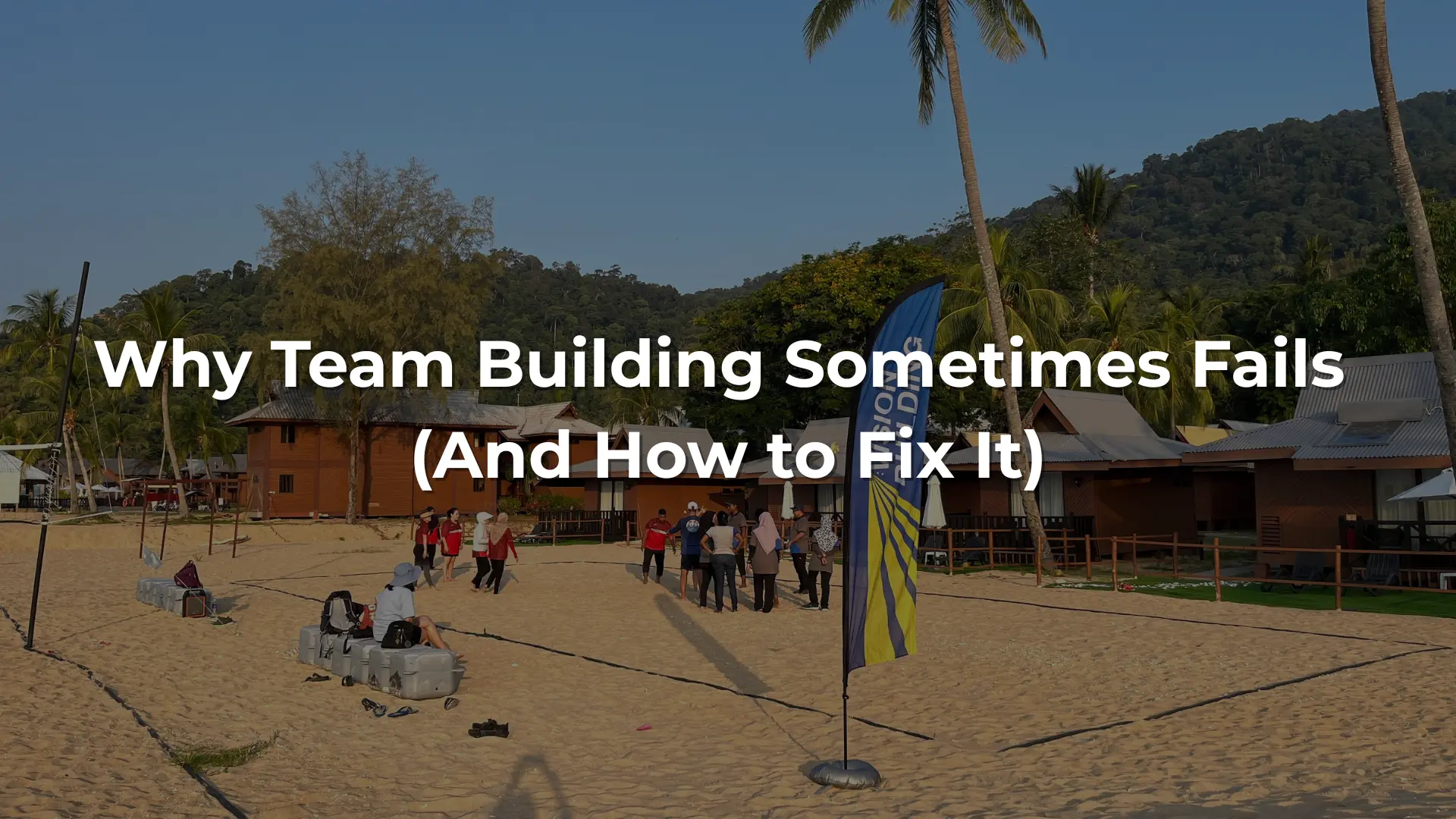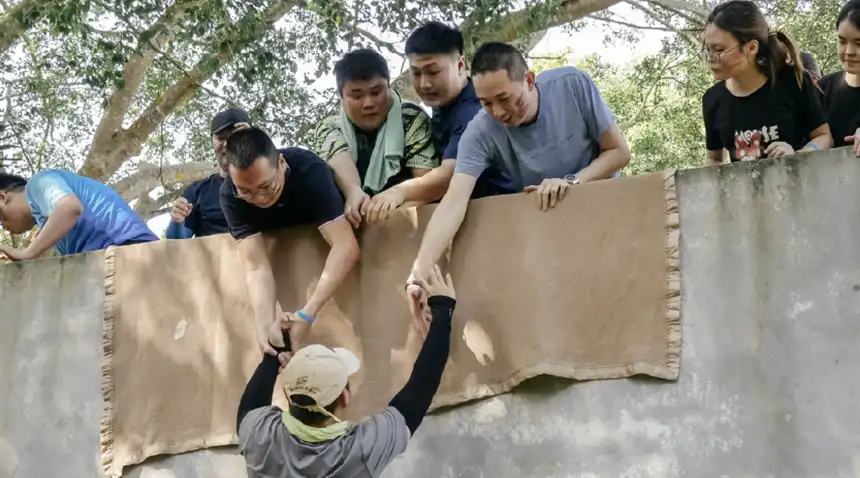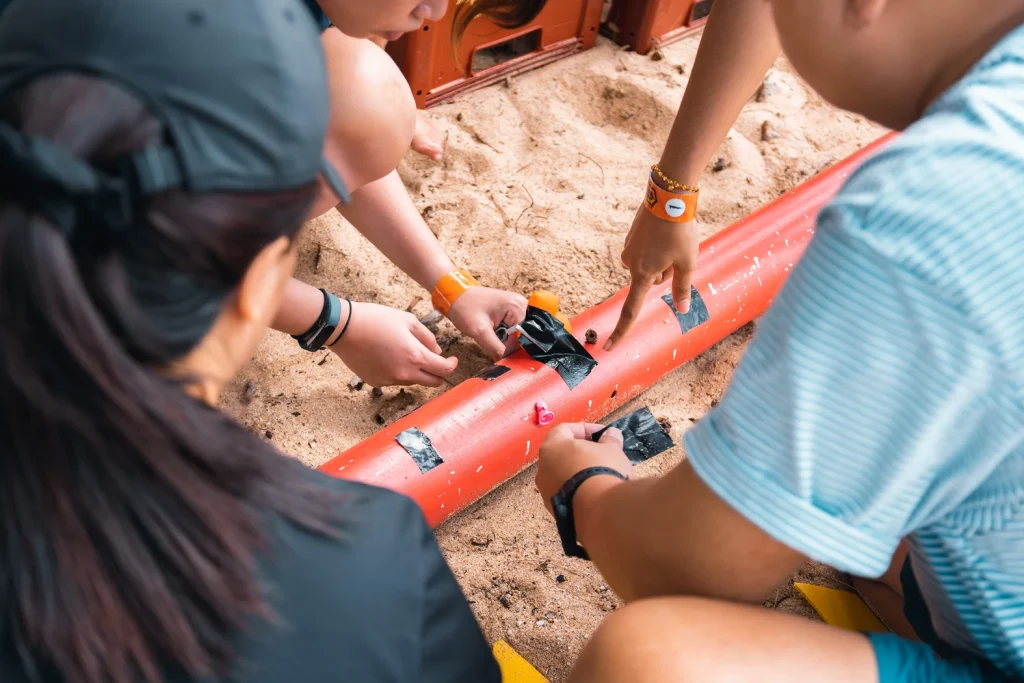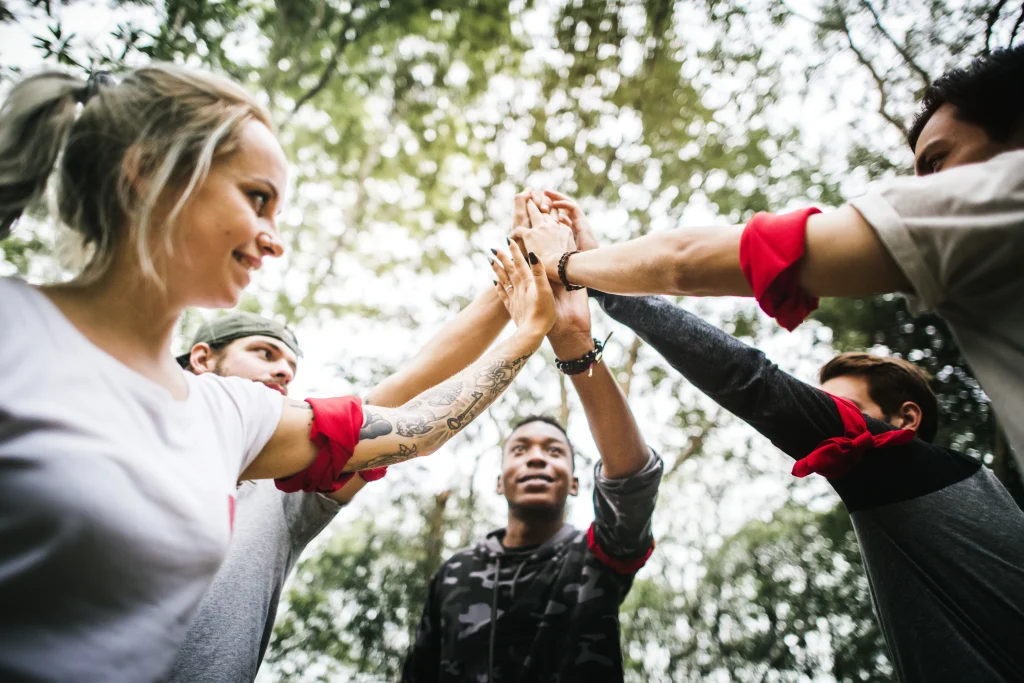
Why Team Building Sometimes Fails (And How to Fix It)
“We Did a Team Building, but Nothing Changed.”
If you’ve ever organised a team building session that felt fun on the day—but made no difference after, you’re not alone.
“It was great… but work feels the same.”
“We played games, but nothing changed.”
“People were engaged during the event, but that’s about it.”
Team building doesn’t always work.
But that doesn’t mean it’s a bad idea.
It usually means it wasn’t designed with the right purpose, structure, or context.
Not sure what a good team building should include in the first place?
Start here: The Ultimate Guide to Team Building in Malaysia . Your go-to resource for planning formats, goals, and ideas that actually work.

1. Why Team Building Fails (Even When It’s “Fun”)
- No clear purpose
Many sessions are planned as a “break” from work—without aligning to any team challenge or developmental need. Without a purpose, even the best activity becomes… just an activity.
- Wrong activity for the team
Using physical obstacle games for a team struggling with communication? Or a “lecture-style workshop” for a burned-out team that just needs space to reconnect? Mismatch kills impact.
- One-off event with no follow-up
Teams don’t transform in a day.
When there’s no post-activity reflection, integration, or reinforcement, even great sessions fade from memory within days.

2. Common Signs Your Team Building Missed the Mark
- Participants enjoyed the day but can’t remember the takeaway
- The team didn’t apply anything after the event
- Difficult topics stayed unspoken (e.g. real tensions, misalignment)
- The activity felt “off” — not right for the team’s stage, size, or dynamic.
- It didn’t contribute to any long-term HR or leadership goal
These aren’t just logistical misses — they point to a lack of strategic intent.
3. How to Fix It: Turning Activities Into Real Impact
1. Start with a real team goal
- Is your team struggling with communication?
- Misalignment between departments?
- Lack of trust or ownership?
Team building should address a real friction—not just create a moment of fun.
2. Match structure to context
- Small teams? Use dialogue-based games.
- Cross-functional teams? Use shared planning simulations.
- Large teams? Use multi-station formats to increase interaction density.
Explore how different formats match different team sizes in this guide.
3. Build around purpose, not format
It’s easy to choose what looks fun.
But the question is: what does your team need right now?
Sometimes a half-day bonding session is enough.
Sometimes, you need to embed it into a leadership program or a multi-step development process.
4. If eligible, claim it under HRD Corp
Structured, outcomes-based programs can often be HRDC-claimable, giving you both financial support and a reason to plan better.

4. Team Building That Works Is Never Random
When team building is well-designed, it doesn’t just create smiles—it creates insight, trust, and culture shifts.
That’s when:
- Your team sees each other differently
- Unspoken frictions come to light
- New working norms start forming
- People take ownership beyond their roles
But that doesn’t happen with a checklist event.
It takes intention, facilitation, and follow-up.
Conclusion: It’s Not That Team Building Doesn’t Work—It’s That Most Aren’t Designed To
The next time someone says, “Team building doesn’t really work,”
ask:
“Or was it just not built to work?”
If you’re ready to design a session that actually reflects your people, your goals, and your working culture—we’re here.
→ Contact Vision Building to co-create a program that makes sense, not just noise.